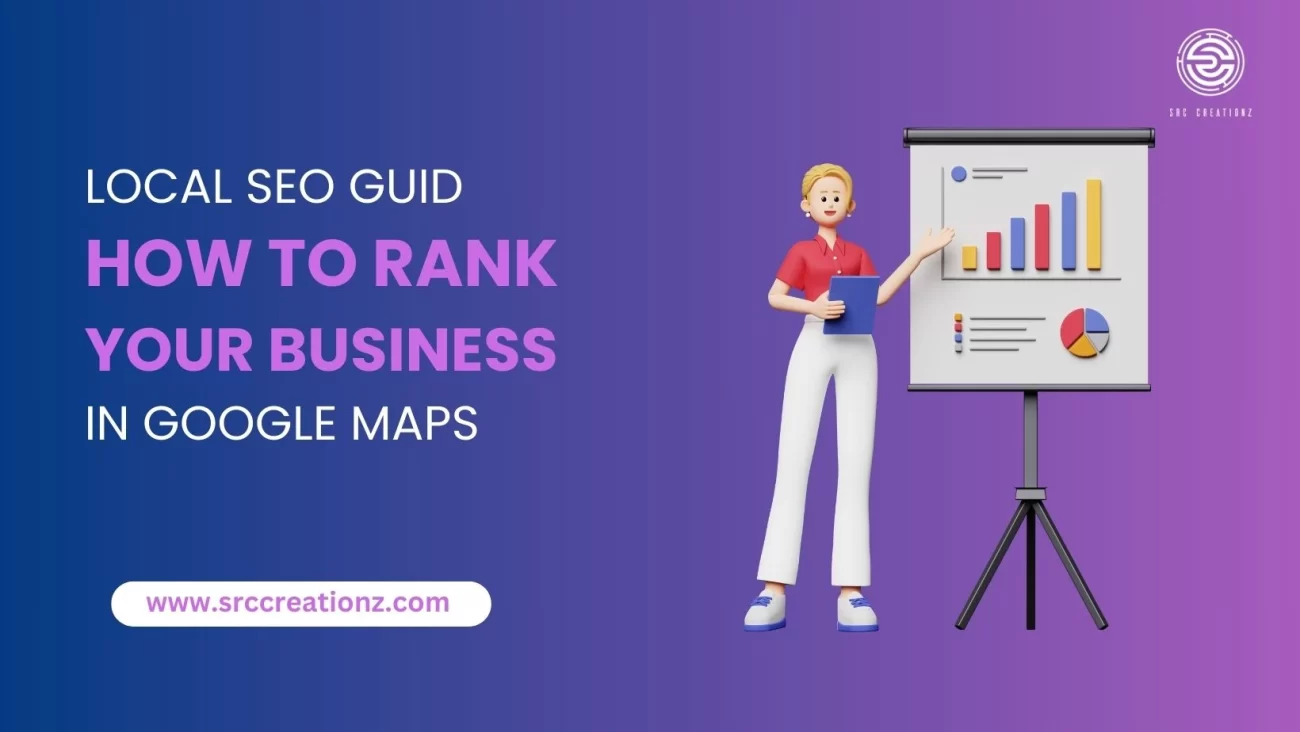
Presence must be built in today’s online world for a local business; Google Maps has become one of the best ways to draw people into a business and create local optimization for your listing to see it on the map. Here, a guide will walk you through actionable rankings for business in Google Maps through Local SEO techniques.
________________________________________
Why Google Maps Ranking is Important
Google Maps ranks first in the mind of someone when looking for nearby businesses. Whether the person is looking for a coffee shop, a plumber, or a retail store, visibility on Google Maps will give your business quite an advantage. Higher rankings help you:
• Increase visibility to local customers.
• Increase footfall while attracting foot traffic.
• Improve credibility and trust.
________________________________________
Step-by-Step Guide to Ranking on Google Maps
1. Claim and Verify Your Google My Business (GMB) Listing
The Google My Business (GMB) profile serves as the backbone for your Google Maps ranking. Here are suggestions for optimizing it:
• Claim your business: If you’ve not done so already, make your claim to your GMB listing.
• Verify your business: Google mostly conforms to postcard verification for proof of the existence of your business.
• Complete your profile: Verify your name, address, phone number (NAP), and business category are completely accurate and consistent.
________________________________________
2. Optimize Your GMB Profile
An optimized and accurate GMB profile can not only significantly improve your ranking but also drive many more clicks for your business. Focus on these basics:
• Upload quality images: Showcase your storefront; its products or services.
• Write a description of a business that encourages: Include relevant keywords naturally.
• The correct categories: Be specific when selecting business categories.
• Services and products to be listed: Briefly highlight what you provide customers concerning products or services.
3. Solicit Reviews and Interact with Customers
Another thing customers can do for companies is leave a review. Not just the boards relating to a company’s name, but customer reviews also induce trust and contribution in Google Maps rankings.
• Ask for reviews: Make polite requests from satisfied customers to leave a review.
• Respond to reviews: Appreciate every good thing people have to say about the place and take up the complaint in a formal way if there is a negative comment.
• Gather Review Collection: Collection of reviews from time to time to keep credibility intact.
________________________________________
4. Populate the Content with Local Keywords
Those keywords inform Google searching about the connection between your business and local searches.
• List the local keywords: Find terms that are popular using tools like Google Keyword Planner or Ubersuggest.
• Know-how: Induct them into your GMB description, posts, and website content.
• Localized content: Write blogs or FAQs addressing local customer’s needs.
________________________________________
5. Maintain Consistency of NAP
Consistency is the main principle for local SEO.
• Equalize business info: replicate exactly your Name, Address, and Phone number (NAP) with that on your website, your GMB list, and any other sites.
• Use structured citations: Business listing sites of Yelp, TripAdvisor, and Yellow Pages.
6Leverage Google’s Posting Program
Google Posts allows you to share updates, offers, or events right on your GMB profile.
– Post consistently: Keeping your audience blanketed with the latest about new services or promotions.
– Use visuals: Attach attention-getting images or videos to catch the eye.
– Include CTAs: To be very encouraging like “Call Now,” “Learn More,” or “Visit Us.”
________________________________________
7 Optimizing for Mobile Users
Most local searches are done on mobile devices, and hence, your website must be mobile-friendly.
– Ensure speed of load: A slow website may drive away potential customers.
– Responsive design: Seamless adaptation of the site to a variety of sizes of screens.
– Add a clickable phone number: Make it easy for your users to get you by just clicking straight from their phones.
________________________________________
8 – Build Local Backlinks
Backlinks from local websites are a signal to Google about relevance.
– Partner with local businesses: Work with relevant businesses to mutually promote each other.
– Local directories: Submit to local business directories.
– Be found in some local blogs: Pitch a local Blogger to have his or her write-up about your business.
9. Monitoring and Improving Performance
Using analytic tools you may measure your Local SEO efforts.
• Check GMB Insights such as search queries, customer actions, and views.
• Employ Google Analytics to look into website traffic via local searches.
• Modify your strategies: Refine efforts by the data collected.
________________________________________
Last Words
Consistently along with smart strategies, one can rank their businesses also in Google Maps. An improved local SEO can be achieved by optimizing your GMB profile, creating customer reviews, local keyword incorporation, and NAP consistency.
Remember, local SEO is a marathon, not a sprint. So being patient is always good, adopting the changes will have a better impact when giving excellent services to the local audience.

